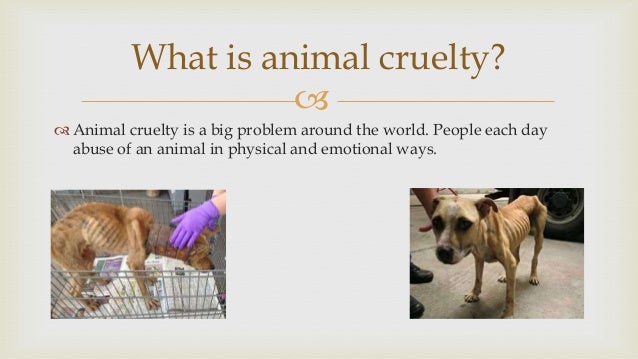In today’s societal landscape, concerns surrounding animal welfare continue to gain prominence. Yet, paradoxically, there exists a faction of individuals who perceive animal cruelty as a trivial matter. This phenomenon raises essential questions about our collective values, beliefs, and the ethics entwined in our treatment of non-human animals. Analyzing the underlying reasons why some people consider animal cruelty insignificant can facilitate a greater understanding of this pervasive issue and potentially inspire a fundamental shift in perspective.
Fundamental to this discourse is the concept of cognitive dissonance. For many, the act of condoning or ignoring animal cruelty serves as a defense mechanism against the discomfort of confronting uncomfortable realities. Society has been conditioned to view certain behaviors, such as factory farming or animal testing, through a lens of normalization. By desensitizing oneself to the suffering of animals, individuals can conveniently obscure the moral implications of their dietary and consumer choices. This mental compartmentalization fosters a detachment from the visceral truth of animal suffering.
Moreover, cultural influences cannot be underestimated. Social norms play a pivotal role in shaping perceptions of acceptable behavior. In cultures where animals are primarily viewed as property rather than sentient beings, the inherent value of animal lives diminishes in the eyes of the populace. The objectification of animals within various societal constructs perpetuates a narrative that de-emphasizes their inherent worth. Consequently, the commodified view of animals serves to trivialize acts of cruelty against them.
Compounding these factors is the pervasive influence of media and popular culture, which contribute to the construction of public perception. Often, portrayals of animal cruelty are sensationalized or romanticized, providing merely a superficial understanding of the gravity of the issue. Movies, television shows, and even advertisements may inadvertently glamorize violence against animals or present it as a comedic element, further embedding harmful ideologies into communal consciousness. This misrepresentation leads to a superficial engagement with the topic, fostering a belief that animal cruelty is, at worst, a minor inconvenience.
Additionally, there exists a distinct disconnect between urban and rural perspectives toward animal welfare. In rural areas, where animals are an integral part of agricultural and domestic life, their treatment may be viewed through the prism of utilitarian logic. Here, the prioritization of economic productivity can overshadow ethical considerations. This divergence in viewpoints frequently engenders misunderstandings between urban dwellers, who may advocate animal rights fervently, and their rural counterparts, who perceive such advocacy as an undue imposition of urban ideals on their traditional practices.
The absence of comprehensive animal welfare education exacerbates the issue. Many individuals grow up devoid of any substantive understanding of animal sentience, the psychological complexities animals exhibit, or the ethical dilemmas inherent in human-animal interactions. Traditional educational curricula often neglect to explore these topics, thereby limiting opportunities for critical discourse. Without this foundational knowledge, it becomes remarkably easy for individuals to overlook acts of cruelty as inconsequential.
Furthermore, socioeconomic factors contribute to the minimization of animal cruelty. In a society laden with poverty, people might struggle to prioritize the welfare of animals when their own survival is at stake. The dire circumstances of existence can engender a singular focus on human needs, inadvertently relegating animal welfare to the background. While this is not an excuse for cruelty, it illustrates a tragic intersection between human suffering and animal suffering—one that often leads to the latter being deemed insignificant.
The ramifications of viewing animal cruelty as a minor issue extend far beyond individual behavior. When societal attitudes lean toward indifference, legislative progress suffers immensely. In many jurisdictions, animal protection laws remain inadequate and poorly enforced. Public apathy towards animal welfare diminishes the urgency to advocate for more stringent policies and protections, thus perpetuating a cycle of victimization in which countless animals endure torment with little recourse for justice.
Yet, the potential for transformation lies in acknowledgement and education. Promoting awareness of the philosophical, ethical, and scientific arguments for animal rights can serve as a catalyst for change. Initiatives that confront the moral dilemmas associated with animal exploitation can reshape perceptions. Public campaigns that highlight the bond between humans and animals—the shared ability to feel pain, joy, and fear—can evoke empathy and foster a deeper comprehension of animal sentience.
Moreover, embracing the interconnectedness of all living beings can pivot discussions surrounding animal cruelty away from mere sentimentality toward a more profound ethical imperative. By framing animal welfare as integral to human dignity and societal progression, advocates can elevate the discourse about cruelty into a conversation about justice—for both humans and animals alike.
The path forward necessitates an unwavering commitment to compassion and understanding, where society collectively acknowledges that animal cruelty is a matter of moral significance. The battle against the desensitization and apathy surrounding this issue demands a multifaceted approach—one that not only advocates for change but also seeks to cultivate a culture of empathy and advocacy. The narratives we choose to embrace define our ethical landscape, and in reexamining our relationships with animals, we can pave the way for a more humane future.






